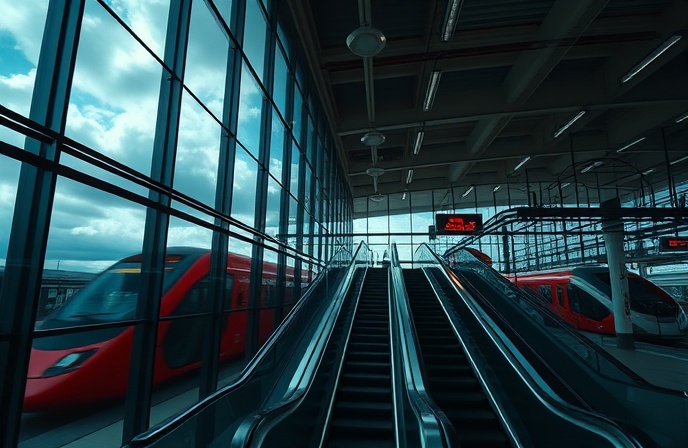CHEC Secures $2.3bn Contract to Build Railway in Uganda
China Harbour Engineering Company (CHEC) has signed a contract to build the section of the MoKaKi railway between the Kenyan border and Kampala, which will require a $2.3bn investment.

China Harbour Engineering Company (CHEC) has signed a contract to build the section of the MoKaKi railway between the Kenyan border and Kampala, which will require a $2.3bn investment.
MoKaKi is the new name for the standard gauge railway (SGR) that is expected to run from Mombasa, through Nairobi, to Kampala and on to Kigali. China Road and Bridge Corporation has now completed 98% of the first section, between Mombasa and Nairobi.
Kampala had signed a memorandum of understanding with China Civil Engineering Construction Corporation in 2012 for the section of line in eastern Uganda. However, it has now opted for CHEC to build the line between the Kenyan border and the Ugandan capital. Export-Import (Exim) Bank of China is to provide most of the $2.3bn investment that will cover engineering works, line construction and the purchase of rolling stock.
[ad id=”126376″]
For its part, the government of Uganda will provide 15% of the money, possibly through a commercial loan, plus the land required for construction. The Ugandan government has announced that it has already acquired 60% of the land required to build the 273km section. The first trains are due to run in mid-2020.
A separate contract will be awarded for the section of line between Kampala and the Rwanda-Uganda border at a later date. That stretch will cover roughly the same length as the section in eastern Uganda. This contract is unlikely to be awarded until Rwanda commits to extending the line on to Kigali. In addition, another section of railway is expected to link the MoKaKi line in Uganda with the South Sudanese capital of Juba.
Project coordinator Kasingye Kyamugambi said:[quote font_size=”16″ arrow=”yes”] “As soon as studies are complete and approved, and funds secured, works on the other sections of the SGR will commence.” [/quote]The main motivation for the development of the new railway is to reduce the time and cost of transporting freight to and from Mombasa. The Ugandan government believes that freight transfer by the new railway will be just one third of the cost of existing road and rail transport.
Passenger services are to be launched on the 457km section between Mombasa and Nairobi later this year, taking four hours on express trains that will only stop once en route, and five and half hours by country trains, which will stop seven times: at Mariakani, Miasenyi, Voi, Mtito Andei, Kibwezi, Emali and Athi River. The first six locomotives for use on the line were delivered in January, with another 50 to be commissioned this year and next. Freight trains will take between six and eight hours to reach Nairobi from Mombasa, in comparison with the 20 hours it takes to transport containers by road.
The future role of the existing railway along the same Mombasa-Nairobi-Kampala route, which was built in the British colonial era, has yet to be determined. The railway has been operated since 2006 by a private company, Rift Valley Railways, under a 25 year concession. In December, Nairobi finally compensated RVR for damage and losses incurred during the post-election violence of 2008.
The main shareholder in RVR, Egypt’s Qalaa Holdings, announced in January that it would sell its 73.76% indirect holding in the company. A Qalaa spokesperson said: “The decision to divest from RVR comes in the wake of management’s conclusion that additional capital is required to complete RVR’s transformation programme, which has already yielded positive results according to recent operational performance reports.” The company “will continue to provide operational and managerial support” while it seeks a buyer for its stake.
It is possible that the RVR line could find a role offering lower price passenger services over short distances. However, if the projections on price and speed are correct, then it seems unlikely to retain a role as a freight utility, particularly as it has lost out to road haulage even before the new railway has been built.






